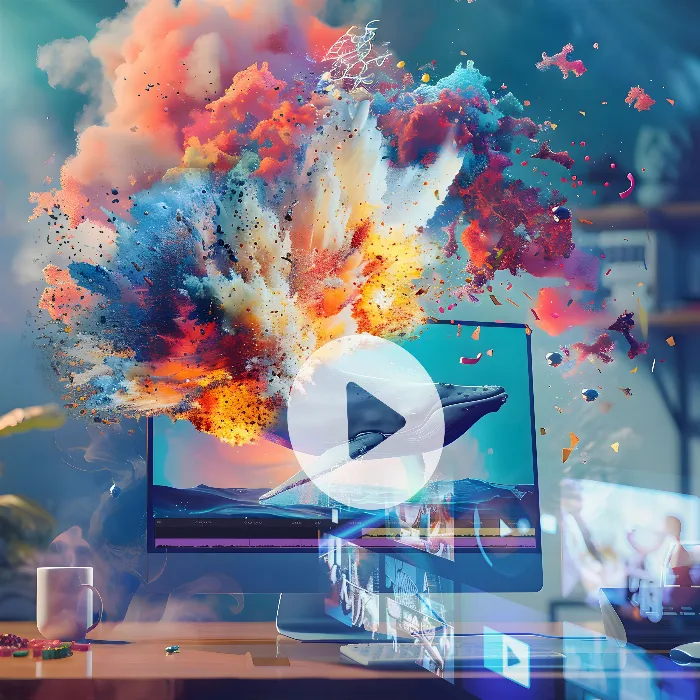In this guide, you will discover the developments of past methods for creating videos with AI virtual avatars. The goal is to give you a better understanding of the problems that can be solved today thanks to virtual avatars. In the past, video production was often time-consuming, expensive, and not very scalable. In this step-by-step guide, I will address the challenges faced in content creation and explain how AI avatars solve these problems. You will learn about the alternatives available to you today and how they can significantly ease your work.
Key Insights
- Previous methods of video production were often inefficient and time-consuming.
- Using a voice-over artist or speaking in front of the camera incurred high costs and effort.
- AI avatars enable significantly scalable and cost-efficient content creation.
Step-by-Step Guide
Let's start with the first step back in the past and see how video production was handled in the past.
It used to be common to speak directly in front of the camera or hire a voice-over artist to create content. This posed the first challenge: finding the right speaker to convey the message effectively.
Another major issue was the immense time commitment. If you wanted to record everything yourself, it meant standing in front of the camera, learning and presenting the content. This was not only time-consuming but also stressful if you needed to improve your presentation skills.
Additionally, the financial cost was a significant disadvantage. Hiring a professional voice-over artist or production team could be nerve-wracking and expensive. Finding the right service provider could take months, delaying your content and draining your resources.
You also had to be present at every location to deliver your message. This physical and time limitation meant you couldn't cater to multiple projects or target audiences simultaneously. Not everyone has the time or ability to continuously stand in front of the camera or work in different formats.
The solutions were not only inefficient but also not very scalable. For example, to reach a large audience on social media, it was necessary to create new content regularly. This required a constant repetition of the process, consuming both resources and time.
With the advent of AI technology, you can now use avatars to create content without having to speak in person. This speeds up the entire process exponentially as you are location-independent and can generate multiple contents simultaneously.
The applications of AI avatars are diverse. They can be used for training videos, marketing content, and much more. You can program your virtual avatar to convey the message exactly as you wish without needing to be present.
Furthermore, AI avatars offer the flexibility to generate content in different languages or dialects, reaching a wider audience. This was not possible to the same extent with traditional methods in the past and often negatively impacted the reach of your content.
In summary, it can be said that the problems in video creation in the past were significant. The good news is that modern technologies like AI virtual avatars can now address these challenges and improve efficiency and scalability simultaneously.
Summary
In this guide, you will learn how video production methods have evolved and how you can create more efficient, cost-effective content with modern AI solutions. The challenges of previous video production methods such as time commitment, financial costs, and lack of scalability are highlighted and replaced by the benefits of AI avatars.
Frequently Asked Questions
What is the main advantage of AI avatars in video production?The main advantage lies in high efficiency and scalability as you do not have to be in front of the camera yourself.
Are AI avatars more cost-effective than traditional video hosting?Yes, AI avatars reduce the costs incurred by hiring speakers or producing content.
Can I cover multiple languages with one AI avatar?Yes, AI avatars can generate content in different languages or dialects to reach a broader audience.


